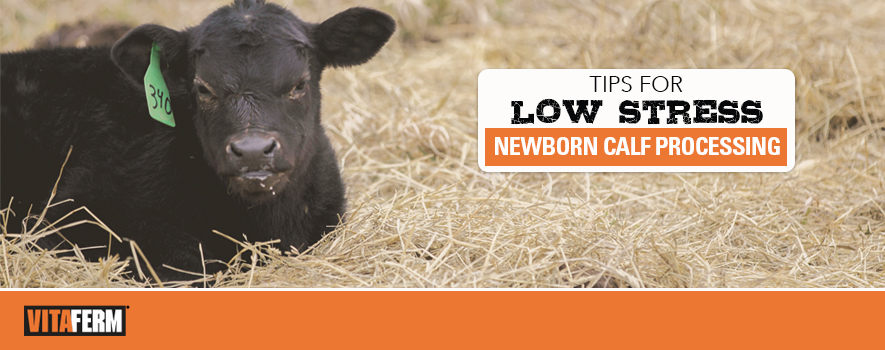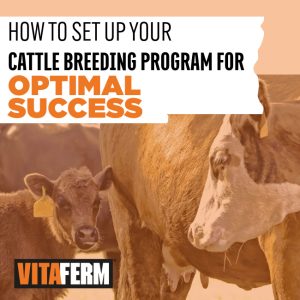
Calving time is much-anticipated around the farm or ranch. Cattle producers work tirelessly to make sure their cow herd is maintained, cared for, fed and vaccinated. Matings were carefully selected, females bred, and roughly 283 days later, the next calf crop hits the ground (hopefully) running with vigor. When those calves do come, be sure you are prepared with all the resources you need to care for these new lives and process the newborn calves in a low-stress fashion to give them the best start at life possible.
There are lots of different calving scenarios that exist. Some calve in the fall, some in the dead of winter, and others in the spring, even though winter storms still pose a risk. Some producers calve out hundreds of cows in a week in “big country” while others keep their 30 cows locked in runs closer to the house. However you calve, you are going to want to make sure your new calf receives a certain level of TLC within the first 12-24 hours of its life to make sure it performs to its maximum potential.
Lindsey Grimes-Hall, BioZyme® Inc. Nutrition & Field Sales Manager, whose family owns and operates a registered Angus and Simmental operation in Ohio, offers some advice on caring for newborns in their first days of life.
Grimes-Hall emphasized the importance of the calf getting colostrum within the first 2-12 hours. Colostrum is a source of immunoglobulins, fat (energy), vitamins and minerals. Since calves are born without antibodies in their system, the primary role of colostrum is to passively transfer immunity from the cow to her offspring, helping prevent illness in the first few months of life.
“Make sure to get your calves off to the right start. Research has shown that getting colostrum in calves within the first hours of life has a tremendous impact on future performance,” Grimes-Hall said. “The longer it takes the calf to get colostrum, the less antibodies the calf is able to physically absorb to improve its immune protection.”
Due to the calf’s lack of immunity at birth, providing it with some key nutrients and vaccinations within the first 12 hours of its delivery is also key. Additional vaccines can be used to increase levels of specific antibodies. Producers should work closely with their veterinarian to establish a herd health protocol for newborns that is best suited for their operation. Shots of Vitamins A & D as well as Selenium may also prove beneficial to the calf in the first few days of life.
Other considerations for caring and processing your newborn include dipping navels, tagging, and weighing the calf, all which should be done within the first 24 hours of life. Dipping the umbilical cord as soon as possible after birth will help prevent bacterial infections. Tagging provides a semi-permanent form of identification until the calves are older and ready for a tattoo or freeze brand. Tagging does not hurt the young calves but provides the producer a simpler way to pair them to their mothers, especially when getting multiple calves in a 24 to 48-hour period. Grimes-Hall also reminds producers it is easier to capture and tag a calf that is just a day old than one that is a week to 10-days old.
“For someone who appreciates maintaining solid data, be sure to capture the birthweight the first 24 hours the calf is alive, not a week later,” Grimes-Hall said. Performance-minded operations will typically be very mindful of capturing weight data on newborns. Remember for the most accurate reading, a scale and not a tape measure, is preferred.
Finally, consider the environment where your calves and their mamas are housed during and post-calving. Weather permitting, calving and housing pairs outside in the open is most ideal to circulate fresh air and prevent sickness. If cold weather sets in, be sure to have a windbreak and/or bedding to help keep young calves dry and warm.
If the weather gets too extremely cold and wet, you will likely want to house your cattle under a roof. Confinement is nice for your cattle, but it can also lead to scours and other health challenges. Be sure to clean your barn and bed it regularly to keep calves as healthy as possible.
If you have a calf that just won’t nurse, is sick or shows other signs of stress, you might want to offer it a Vita Charge® product like Neonatal. Vita Charge Neonatal is specifically designed for newborns and provides a combination of anti-stress vitamins, Amaferm® and MOS. These components work together to support calf immunity and performance by supporting robust digestive health, which is often compromised during stress. And since Neonatal is relatively new, if you don’t have it readily available, you can always offer your newborn calf, Vita Charge Gel to help eliminate stress and get it back on its feet.
You’ve cared for your calves, but don’t forget about their mamas. Parturition and lactation are the most critical times for the cows’ nutrient requirements. They have delivered a calf, are providing nutrients and energy for that calf and will be expected to breed-back in a short window of time. Read more about the cow nutrient requirements to make sure you are prepared for this time of the mother’s life.


